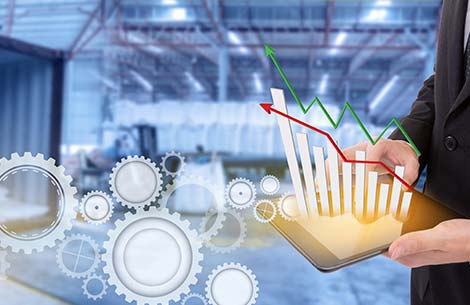Supply chain management is evolving right alongside technology and the growing needs of a global marketplace. Take a look at the changes businesses can expect to see in the next decade, and how it may affect your supply chain strategy.
There's a significant amount of change taking place in business today, and it requires owners to avoid disruption to their supply chain strategy.
Supply chain management plans will need to take into account automation and tech innovation, new geographies and regional sourcing, increased regulation and climate change.
Automation and Tech Innovation
Extensive job automation can affect your supply chain strategy for the better because it allows organizations to reap the unique strengths of both humans and machines.
"Teaming together human creativity, abstract thinking and adaptive response together with machine precision gets you the best of both worlds, leaving machines in charge of what they do best—easy, repeatable tasks—and freeing humans to be the best they can be," says Dr. Gabriele Rizzo, a futurist adviser for private and public international defense organizations.
But businesses will need to work with labor unions and governments to transition workers into new roles and help them to re- and upskill, and to enforce the appropriate labor laws involving safety, wages and hours. They may also want to consider developing a means to collect worker feedback and adjust operations, so they meet employee needs throughout the march toward automation.
In the next 20 years, global scale will involve having regional supply throughout the world: to put it simply, local supply for local demand. - David Reitz, CEO and managing director, Inventec Performance Chemicals USA
According to Rizzo, implementing automation and other emerging technologies are of utmost importance in building and maintaining an edge in supply chain operations.
"These technologies enable fine-grained gathering of operational data, advanced analysis of processes and impacts and faster decision making," she says.
A 2017 Gartner report predicted that by 2021, virtual customer assistants (VCAs) and chatbots will handle 20 percent of all customer service interactions. Although technology innovations such as VCAs and autonomous mobile robots are getting smarter, human workers are still needed to integrate and oversee their participation—and this often requires a highly specialized, but not always readily available, skillset.
If your supply chain strategy already incorporates data analytics, you're off to a great start. But even so, it's becoming even more important for owners to zero in on the information that's most useful and relevant to them.
Technology-based supplier audits are valuable, as are digital platforms and dashboards that assess the effectiveness of operations and worker sentiment in real time.
To fully leverage Big Data's potential, owners must determine the data science skills required for their operations, and work to source these either internally or externally.
New Geographies and Regional Sourcing
Every day, global consumers are demanding new types of products and services. There may be a time when traditional sourcing methods no longer work overseas.
Consider investigating regional locations that can better serve your global customers' needs. (And make sure that new contributions to the supply chain are agile and reliable.)
This is a trend that David Reitz, CEO and managing director of environmentally friendly cleaning materials provider Inventec Performance Chemicals USA, is already on top of. (Reitz makes supply chain network decisions between various continents and performs geographical network optimization for his company.)
“For the past 20 years, we have seen a major production shift to China to optimize the supply chain. In the next 20 years, global scale will involve having regional supply throughout the world: to put it simply, local supply for local demand," he says. “But, we will need to make sure there is an educated and ready workforce to handle it."
Increased Regulation
“Both national and international regulations will move toward setting up a more balanced playing field where compliance with new environmental, labor and human rights standards will drive growth," Reitz says. “It may be challenging for smaller businesses to make the essential investments here, but I'm hopeful that government will aid in the transition."
Facing more strident regulation, businesses must also be more transparent and prepared to disclose more information about their supply chain strategy and practices than they did in the past. Visibility and clarity of available data can help owners steer clear of unnecessary scrutiny and interventions.
Climate Change
Finally, a strong supply chain strategy may be one that also includes climate change considerations. Businesses can anticipate potential problems by:
- continuously monitoring the situation,
- assessing risks,
- adjusting operations to include new materials and suppliers and
- replacing or reconfiguring scarce resources.
You may want to consider making sure that new partners share the owner's commitment to the climate-friendly and sustainability practices appreciated by consumers.
Future-proofing your supply chain strategy may seem daunting, but adequate preparation may help ensure greater success.
If you aren't sure where to start, Reitz recommends seeking assistance from government organizations, nonprofits and universities—these organizations can help assess your business' role within the broader supply chain landscape.


